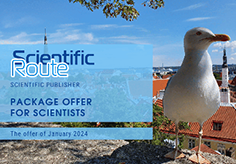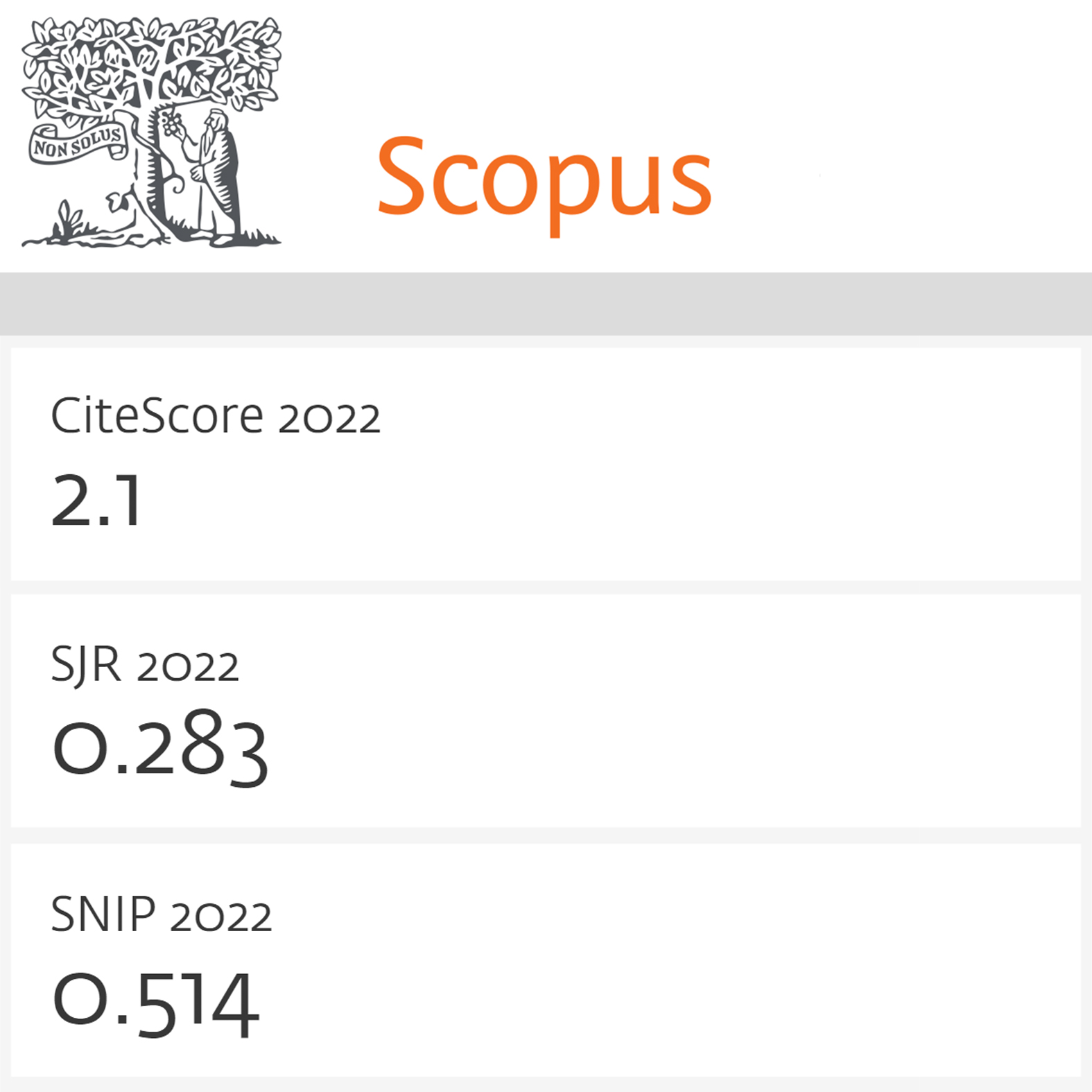Improvement of the filling and plasticization processes of forming multifunctional leather materials
DOI:
https://doi.org/10.15587/1729-4061.2016.65488Keywords:
semifinished leather product, filling and plasticizing processes, tannins, montmorillonite, technology, physicochemical properties, microstructureAbstract
The study concerns the filling and plasticizing processes in the final stages of forming multifunctional leathers from various raw materials on the basis of using new composite systems. The structure of a tannin-containing composition was found to affect the process of its diffusion throughout the structure of the topographic areas of the semifinished chrome-tanned product. In particular, we have determined that the depth of diffusion of the filling composition in loose areas was close to 100 % with a 5 % use of the mass of the intermediate product; in dense areas even with a bigger use of the mass, it was only 80 % of the thickness of the intermediate product.
The structure of the filling and plasticizing composition was developed to form various leathers from hides of cattle and sheep. A protein hydrolysate and a highly dispersive modified aluminosilicate have proved to influence the process of forming and the physicochemical properties of semifinished leathers. If the filling and plasticizing composition contains optimal amounts of montmorillonite and protein hydrolysate at 4–2 % of the semifinished leather mass, the obtained leather materials have respective tensile strengths of sheepskin and bovine hides of 15–16 MPa and 20–22 MPa, and their stiffness is 15–16 and 21-22 SN.
The use of montmorillonite in the filling and plasticizing compositions in processing semifinished chrome-tanned products proved to ensure stability of the dispersed structure in further processing and its mobility in the cyclic deformation of the products. The complex study of the process of filling and plasticizing semifinished chrome-tanned products was the basis for developing effective technologies to produce elastic materials for footwear leather uppers and apparel and haberdashery articles with the necessary physical and mechanical properties as well as bigger volume and area outputs by 270–310 сm3/100 g of protein substance and by 5–6 %, respectively, in comparison with the outputs of the industrial technology.
References
- Danylkovych, А. H. (Ed.) (2011). ekolohichnо oriyentovani tekhnolohichni vyrobnytstva shkiryanykh ta khutrovykh materialiv dlya stvorennya konkurentospromozhnykh tovariv. In 2 parts. Part I. Ekolohichno oriyentovani tekhnolohiyi vyrobnytstva shkiryanykh ta khutrovykh materialiv. Kyiv: Feniks, 437.
- Danylkovych, А. H. (2002). Efektyvnist' vykorystannya kolahenu pry yoho strukturuvanni. Visnyk Kyyivs'koho natsional'noho universytetu tekhnolohiy ta dyzaynu, 1, 182–185.
- Danylkovych, А. H., Mokrousova, O. R., Okhmat, O. A.; Danylkovych, A. H. (Ed.) (2009). Tekhnolohiya i materialy vyrobnytstva shkiry. Kyiv: Feniks, 580.
- Danilin, D. V., Studenikin, S. Y., Zykova, N. V., Bohomolov, V. H. (2009). Vlijanie raspredelenija napolnjajushhih polimerov po slojam spilka. Kozhevenno-obuvnaja promyshlennost', 6, 46–48.
- Ma, J. Z., Lu, H. (2008). Elasticity studies on leather retanned with various types of acrylic polymers. J. Amer. Leather Chem. Assoc, 103 (11), 363–369.
- Nashy, E. H. A., Hussein, A. L., Essa, M. M. J. (2011). Novel retanning agents for chrome tanned leather based on emulsion-nano particles of styrene/butyl acrylate copolymers. J. Amer. Leather Chem. Assoc, 106 (9), 241–248.
- Vynnytskyy, B. D., Lebedev, O. P., Makarov-Zemlyanskyy, Ya. Ya., Studenykyn, S. Y., Horbatov, S. V., Mazanov, A. A. (2003). Napolnenie i dodublivanie hromovyh kozh polimerami novogo pokolenija. Kozhevenno-obuvnaja promyshlennost', 1, 33–34.
- Hilyasov, E. A., Ostrovskaya, A. V. (2010). Aminofurazanovaja smola kak napolnjajushhij i dodublivajushhij reagent v proizvodstve kozhi. Novye tehnologii i materialy legkoj promyshlennosti, 77–81.
- Chernova, A. V., Latfullin, Y. Y., Ostrovskaya, A. V. (2010). Modificirovannye aminosmoly kak napolnjajushhie i dodublivajushhie reagenty. Novye tehnologii i materialy legkoj promyshlennosti. Kazan: KGTU, 120–124.
- Jaisankar, S. N., Gupta, S., Lakshminarayana, Y., Kanakaraj, J., Mandal, A. B. (2010). Water-based anionic sulfonated melamine formaldehyde condensate oligomer as retanning agent for leather processing. J. Amer. Leather Chem. Assoc, 105, 289–296.
- Yurasova, O. V. (2008). Razrabotka i primenenie dodublivajushhej kompozicii v kozhevennom proizvodstve. Kozha i obuv', 3, 30–33.
- Yurasova, O. V. (2008). Vlijanie dodublivajushhih i napolnjajushhih preparatov na svojstva kozhi. Estestvennye i tehnicheskie nauki, 3 (35), 382.
- Jurasova, O. V. (2008). Poluchenie dubjashhego preparata dlja kozhevennoj promyshlennosti na baze sul'foaromaticheskih soedinenij. Biotehnologija, 34.
- Jurasova, O. V. (2010). Vlijanie «RKF-1» na potrebitel'skie svojstva kozhevennogo polufabrikata. Kozhevenno-obuvnaja promyshlennost', 1, 48.
- Ramazonov, B. G., Kadirov, T. Zh., Toshev, A. Ju., Hudanov, U. O., Ahmedov, V. N. (2008). Napolnenie kozhazotsoderzhashhimi polimerami. Doklady Akademii nauk Respubliki Uzbekistan, 2, 64–67.
- Chursin, V. I. (2009). Vlijanie ishodnyh komponentov na kozhevenno-tehnologicheskie svojstva polimerrastitel'nyh dubitelej. Kozha i obuv, 1, 20–22.
- Chursin, V. I., Bordunova, E. V., Osipov, A. V. (2008). Vlijanie biopolimernyh kompozicij na uprugo-plasticheskie i prochnostnye svojstva kozh. Kozha i obuv, 2, 16–18.
- Mariliz, G., Silva, D., Vigannico, I. (2010). Leather retanning with hydrolyzed protein. J. Amer. Leather Chem. Assoc, 105, 195–202.
- Balada, E. H., Taylor, M. M., Brown, E. M., Liu, C. K., Balada, E. H., Cot, J. (2009). Whey protein isolate: a potential filler for the leather industry. J. Amer. Leather Chem. Assoc., 104, 122–130.
- Wang, C., Feng, S., Wu, J. (2011). Preparation of organosilicone modified palm oil fatliquor. J. Amer. Leather Chem. Assoc., 106, 161–169.
- Bajandin, V. V., Klenovskaja, N. V., Zhivova, Z. K., Galushkina, T. A., CHepygova, O. I., Klenovskij, D. V., Tarushina, M. A. (2003). Intensifikacija krasil'no-zhiroval'nyh processov sovmeshhennym metodom. Kozhevenno-obuvnaja promyshlennost', 4, 25–26.
- Bajandin, V. V., Klenovskaja, N. V., Zhivova, Z. K., Galushkina, T. A., Chepygova, O. I., Klenovskij, D. V., Tarushina, M. A. (2003). Intensifikacija krasil'no-zhiroval'nyh processov sovmeshhennym metodom (soobshhenie 2). Kozhevenno-obuvnaja promyshlennost', 5, 37–38.
- Gorjacheva, L. A., Chirkova, N. A., Chibotarjova, O. I. (2011). Napolnenie kozhi liposomnymi kompozicijami. Kozhevenno-obuvnaja promyshlennost', 2, 33–34.
- Chirkova, N. A., Esina, G. F., Chubatova, S. A., Chipilenko, E. V. (2013). Ispol'zovanie liposomal'nyh kompozicij v proizvodstve i jekspluatacii kozhi i meha. Tehnologіi ta dizajn, 3, 1–8.
- Tysoe, Ch., Reiners, J. (2009). Technologie zur Weichmachung von Leder. IDC Leder und Haute Markt, 1, 26–30.
- Fordzyun, Y., Andreyeva, O., Maistrenko, L. (2013). Level of Comfort: Artificial and Natural Shoe Materials. A Comprehensive Assessment. Key Engineering Materials, 559, 25–30. doi: 10.4028/www.scientific.net/kem.559.25
- Hlubysh, P. A., Teslya, O. P. (2007). Doslidzhennya protsesu hidrolizu kolahenvmisnoyi vtorynnoyi syrovyny z oderzhannyam novykh preparativ tsil'ovoho pryznachennya. Visnyk Kyyivs'koho natsional'noho universytetu tekhnolohiy ta dyzaynu, 4, 255–259.
- Kerner, S. M., Hlubysh, P. A., Danylkovych, A. H., Zhegotsky O. H. (1995). Kyslotno-luzhni vlastyvosti zoliv kolahenu yak polifunktsional'noho materialu shkiryanoho vyrobnytstva. Visti akademiyi inzhenernykh nauk Ukrayiny, 2, 58–65.
- Teslya, O. P., Mokrousova, O. R., Kovtunenko, O. V., Bukhars'kyy, V. Y. (2009). ICh-spektroskopichni doslidzhennya vzayemodiyi kompozytsiyi ekonat z kolahenom khromovanoyi dermy. Visnyk Kyyivs'koho natsional'noho universytetu tekhnolohiy ta dyzaynu, 6, 95–99.
- Tarasovich, JU. I., Ovcharenko, F. D. (1975). Adsorbcija na glinistyh mineralah. K. : Naukova dumka, 351.
- Danylkovych, А. H. (2006). Praktykum z khimiyi i tekhnolohiyi shkiry ta khutra. Kyiv: Feniks, 340.
- Gouldstejn, Dzh., N'juberi, D., Jechlin, P., Dzhoj, D., Fiori, Ch., Lifshin, Je., per. s angl. Gvozdoverr, R. S., Komolovoj, L. F. (1984). Rastrovaja jelektronnaja mikroskopija i rentgenovskij mikroanaliz. Moscow: Mir, 1, 343; 2, 351.
- Danylkovych, А. H., Omel'chenko, N. V., Brayilko, A. S. (2010). Vlastyvosti nitrotselyuloznykh plivok modyfikovanykh alkilkarboksyetanolaminom. Problemy ljogkoj i tekstil'noj promyshlennosti Ukrainy, 1, 12–15.
- Stirtz, T. (1975). Treatise of Collagen. Leder und Hautemarkt, 26 (9), 155–168.
- Mihajlov, A. N. (1980). Himija i fizika kollagena kozhnogo pokrova. Moscow: Legkaja industrija, 232.
Downloads
Published
How to Cite
Issue
Section
License
Copyright (c) 2016 Anatoliy Danylkovych, Olena Mokrousova, Alexander Zhigotsky

This work is licensed under a Creative Commons Attribution 4.0 International License.
The consolidation and conditions for the transfer of copyright (identification of authorship) is carried out in the License Agreement. In particular, the authors reserve the right to the authorship of their manuscript and transfer the first publication of this work to the journal under the terms of the Creative Commons CC BY license. At the same time, they have the right to conclude on their own additional agreements concerning the non-exclusive distribution of the work in the form in which it was published by this journal, but provided that the link to the first publication of the article in this journal is preserved.
A license agreement is a document in which the author warrants that he/she owns all copyright for the work (manuscript, article, etc.).
The authors, signing the License Agreement with TECHNOLOGY CENTER PC, have all rights to the further use of their work, provided that they link to our edition in which the work was published.
According to the terms of the License Agreement, the Publisher TECHNOLOGY CENTER PC does not take away your copyrights and receives permission from the authors to use and dissemination of the publication through the world's scientific resources (own electronic resources, scientometric databases, repositories, libraries, etc.).
In the absence of a signed License Agreement or in the absence of this agreement of identifiers allowing to identify the identity of the author, the editors have no right to work with the manuscript.
It is important to remember that there is another type of agreement between authors and publishers – when copyright is transferred from the authors to the publisher. In this case, the authors lose ownership of their work and may not use it in any way.









